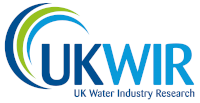Update gives insights into non-acoustic leak detection and location technologies
19/05/2024
Technology company Ovarro has partnered with UKWIR to update the sector on advancements in non-acoustic leak detection techniques. The update provides an overview of the current non-acoustic methods that have been trialled and deployed since 2016, when a first iteration of the study was published, and their relative cost and effectiveness. The report identifies successful applications, potential deployment pitfalls and best practice guidance for trials.
Emerging and novel techniques were also investigated, with a roadmap of future tools that may become available, together with a discussion of the issues faced in research, development and innovation and ways to bring new technologies to market more quickly.
Jeremy Heath of SES Water, the UKWIR programme lead on leakage, said: “By collecting all the latest findings and best practices on non-acoustic detection methods into a single resource, we can assist water companies in making informed decisions about long-term leakage reduction strategies. This will lead to more successful trials and innovative projects, ultimately safeguarding our water supply."
The existing non-acoustic methods summarised in the report, which have been trialled or deployed, are satellite and radar-based techniques, pressure transients, in-pipe survey devices, thermal imaging with handheld devices and drones, temperature monitoring, sniffer dog detection, fibre optics and gas detection.
Investigations into the implementation and outcomes of these trials has enabled the project team to create best practice guidance, which forms part of the report. Its key recommendations are for water companies to follow as rigorous and systematic a process as possible and “to be aware of the weaknesses in their current leakage detection technologies, so they can target trials on these weaknesses rather than seeking general solutions”.
The novel techniques and technologies summarised in the report, that are mostly at proof-of-concept stage, include quantum gravimetry, time domain reflectometry and turbidity monitoring.
The project combined the outputs of a literature review and water company questionnaire with the outputs from two workshops, bringing together water company representatives, suppliers and academics.
The report Update on Non-Acoustic Leak Detection is available here
